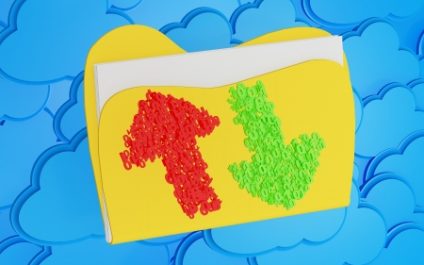What is Data Gravity?
IT support in San Francisco needs to take into account the concept of Data Gravity, which is a new term characterizing the way information is created and utilized across computer systems today. Cloud computing represents a game-changer.
Previously, the idea was that data tends to gravitate toward the location of the largest data set. For proper correlation analysis, consolidation locally was understood to be a necessary eventuality. With the cloud, it’s possible to retain consolidation and correlative analysis. You don’t need the data center internally. But previously, this was the assumption. It was correct for a while. Data tended to “gravitate” toward the in-house data center. Now, cloud computing has made it possible to do the same thing with greater convenience, cost-effectiveness, and scalability. As a matter of fact, cloud computing networks multiple servers together such that it’s possible to analyze larger data sets. Remaining competitive today often requires cloud utility as a result.
How Much Data is in a Petabyte?
Consider that some organizations providing cloud solutions allow for the analysis of 15PB (petabyte) of information. A petabyte is roughly 1,000 terabytes; a terabyte is roughly 1,000 gigabytes; so 15PB of data is over 15,000,000 GB of data. That’s a pretty substantial figure, especially considering most analyzed data doesn’t comprise a ubiquitous level of space. Consider a Microsoft Office spreadsheet. This information is usually less than half a megabyte. You can conceivably store more than 2,000 in a single gigabyte. With 15 terabytes, you’re looking at 2 billion spreadsheets. There are only around 7 billion people in the world— no company generates that many spreadsheets.
Still, other data sets are larger; hence, the need for increased storage and processing capacity. Certain files can do more for the user, and this requires more space. Depending on your needs, you may require more or less data processing capability. IT support in San Francisco can help you determine what you need, how much of that you need, what unrolling such a solution would look like, and how you stand to save. Many Hadoop distributors also see data utility through hybrid solutions as feasible, so you don’t have to allow overly sensitive data to be compromised. Hybrid solutions which combine on-site servers with the cloud are definitely doable and a great way to secure assets while retaining profitability.
Dispelling Incorrect Understanding
There may be an incorrect fear here, though. Cloud security is usually better than on-site data center security. The reason is that such security is part and parcel to cloud vendors retaining their client base. They must be vigilant and always have cutting-edge solutions. Meanwhile, on-site data centers tend to be closer to the bare minimum of necessary security, and are more likely to have exploitable weaknesses. Hybridization can be excellent, but oftentimes it is less necessary than many suppose.
Sourcing Solutions
Notable technology trends related to the cloud include:
- Cloud gravitation
- Competitive ability stemming from increased processing powers
- Increased security
It is easy to see why cloud computing is so integral to modern business. IT support in San Francisco from OneClick Solutions Group can help your business optimize. Contact us for cost-effective, competitive solutions that work with cloud gravitation, not despite it.

